Tungsten Inert Gas (TIG) welding, also known as Gas Tungsten Arc Welding (GTAW), has become an essential technique in the oil and gas industry due to its precision and versatility.
The resulting welds are strong, clean, and aesthetically pleasing, making them ideal for high-pressure pipeline and refinery applications and other manufacturing and construction industries.
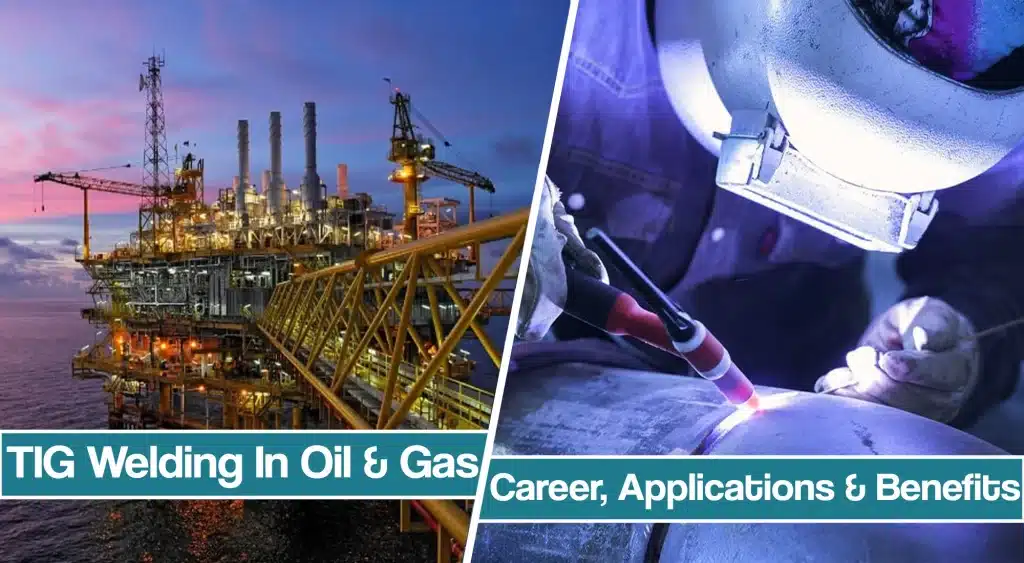
However, TIG welding requires a high level of skill and expertise, making it a niche area of specialization within the welding industry.
In this article, we’ll explore the benefits and challenges of TIG welding in oil and gas industry and delve into the training and qualifications required to master this technique.
Welding in Oil And Gas Industry
Welding plays a crucial role in many areas of the oil and gas industry, including exploration, production, transportation, and refining. Welding is used extensively in the construction and maintenance of pipelines, which are used to transport crude oil, natural gas, and other fluids over long distances.
Welding is used to join individual pipe sections together and to repair any damage that occurs during the service life of the pipeline.
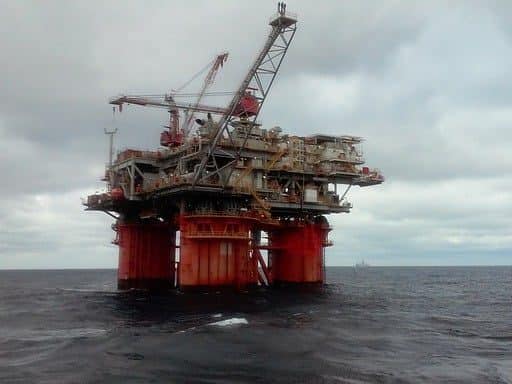
Fabricating and repairing equipment such as tanks, pressure vessels, and heat exchangers that are used in oil and gas refining operations is usually carried out by welding. These components are often subject to high pressures and temperatures, making the quality of the welds critical to their safe operation.
Welding is used extensively in the construction and maintenance of offshore platforms, which are used to extract oil and gas from beneath the seabed. The harsh operating environment offshore requires welds that are not only strong but also resistant to corrosion and fatigue.
Fabricating and repairing large storage tanks that are used to store oil, gas, and other fluids is also done by welding. These tanks must be capable of withstanding the pressure of the stored fluid and be resistant to leaks and other forms of damage.
The Role Of TIG Welding In Oil And Gas Industry
Tungsten Inert Gas welding, also known as Gas Tungsten Arc Welding (GTAW), is a popular welding technique used in the oil and gas industry due to its precision and versatility.
TIG welding is a non-consumable electrode welding process that uses an inert gas, typically argon, to shield the weld pool from atmospheric contamination. The resulting welds are strong, clean, and aesthetically pleasing, making them ideal for high-pressure pipeline and refinery applications.
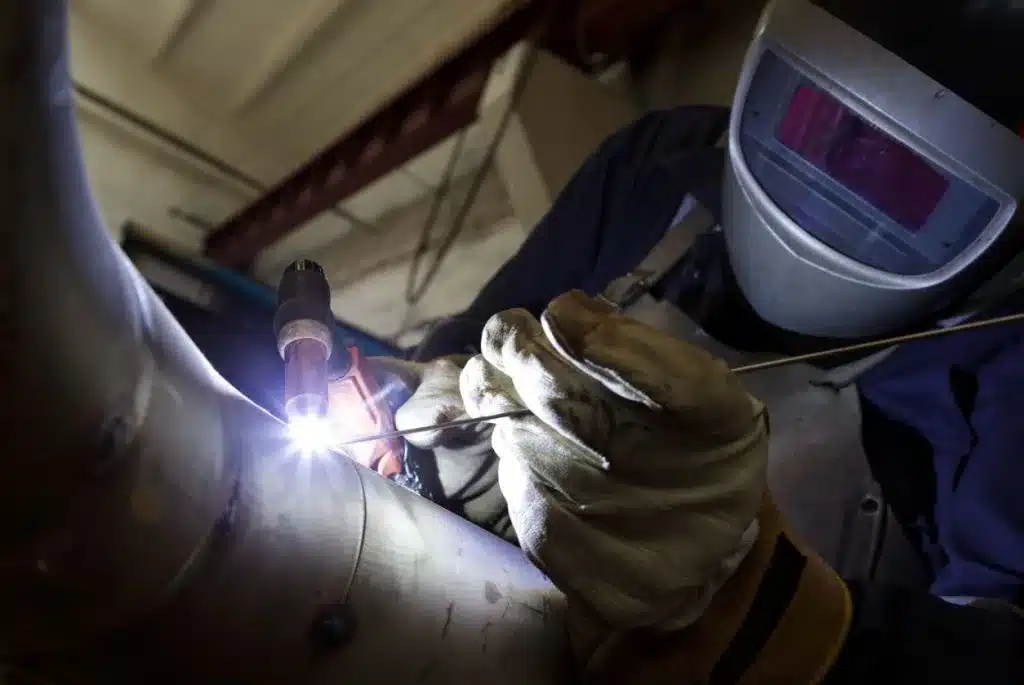
One of the key advantages of TIG welding is its ability to produce high-quality welds in a wide range of materials, including stainless steel, aluminum, and nickel alloys. This makes TIG welding ideal for applications where the quality of the weld is critical, such as in pipelines, refineries, and offshore platforms.
TIG welding is also ideal for welding thin materials, as it produces a narrow and precise electric arc that can be easily controlled. This is important in the oil and gas industry, where many components, such as storage tanks and heat exchangers, require thin materials to be welded.
Challenges Of Gas Tungsten Arc Welding In the Oil And Gas Industry
One of the biggest challenges of TIG welding in the oil and gas industry is the high level of skill and expertise required to perform the technique effectively.
TIG welding is a complex process that requires a steady hand, good eyesight, and a deep understanding of welding principles. Additionally, TIG welding often involves welding thin materials, which requires even greater precision and control.
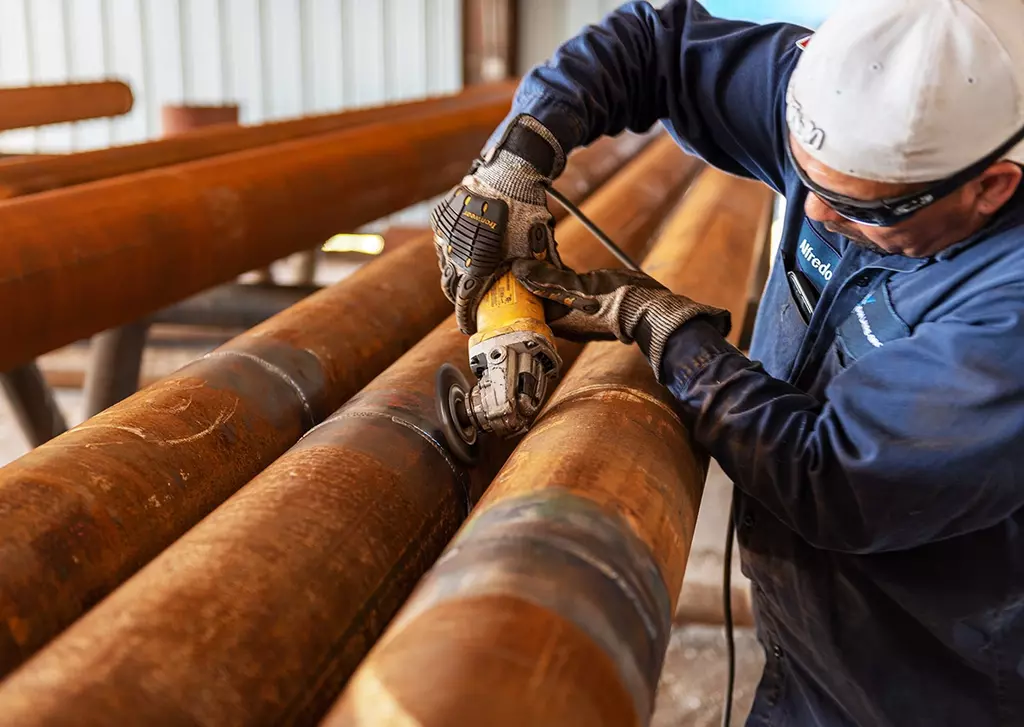
Another challenge of TIG welding in the oil and gas industry is its slow speed. While TIG welding produces high-quality welds, it is also a slow process, which can make it less efficient than other welding techniques for large-scale projects. This can lead to increased project costs and longer lead times.
TIG welding can also be challenging in the harsh operating environments often found in the oil and gas industry. For example, offshore platforms can be subject to high winds, waves, and corrosion, which can make welding more difficult and increase the risk of defects or failures in the weld.
TIG Welder Careers In Oil And Gas Industry
Oil and gas industry relies on welders with specific skill sets necessary to carry out the required task to maintain pipelines, rigs and equipment. TIG welding offers a variety of career opportunities in the oil and gas industry, from hands-on welding positions to more technical roles such as welding inspector or welding engineer.
TIG Pipeline Welders
TIG pipeline welders are responsible for welding the pipes that are used to transport oil and gas over long distances. They play a critical role in ensuring that the pipelines are strong, leak-free, and able to withstand the high pressures and harsh operating environments found in the oil and gas industry.
Pipeline welders must carefully prepare the pipes and other materials that they will be welding and they must be able to set up and operate the welding equipment used in TIG welding, including the welding machine, TIG torch, and shielding gas.
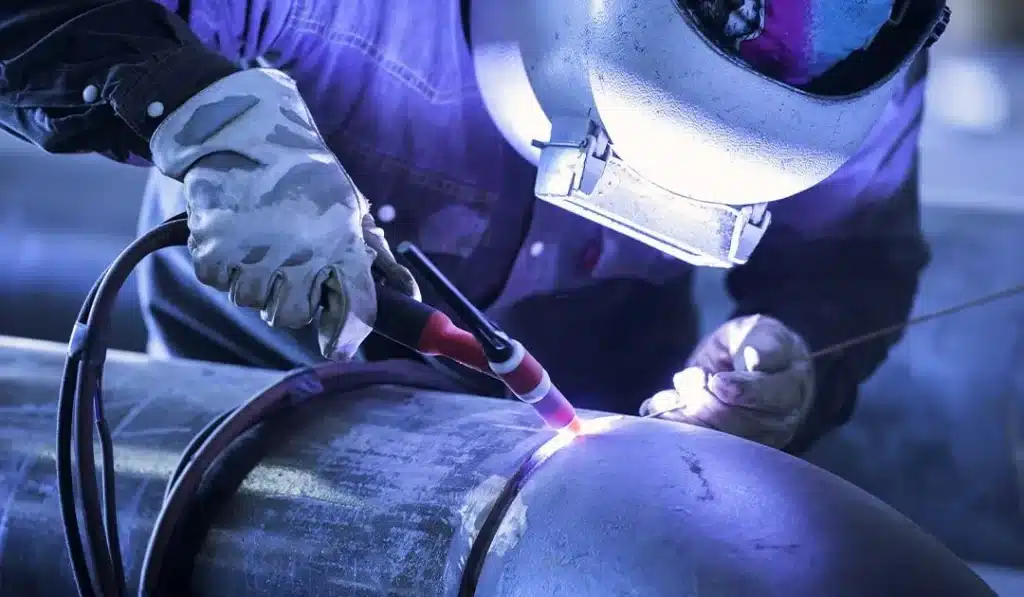
TIG welding requires welders to accurately and efficiently weld pipes to the required specifications. This includes controlling the speed, angle of the TIG torch and welding rod distribution to ensure that the welds are strong and leak-free. Pipeline welders must be able to inspect their welds to ensure that they develop welding procedures that meet industry standards and regulations. This may involve using non-destructive testing techniques such as X-ray or ultrasonic testing, as well as visual inspections.
TIG Welders In Refinery
TIG refinery welders are responsible for fabricating, installing, and repairing equipment used in oil and gas refineries. Their work helps to ensure that refinery operations run safely and efficiently.
TIG refinery welders play an important role in the oil and gas industry by ensuring that refinery equipment is fabricated, installed, and repaired to the highest standards of quality and safety.
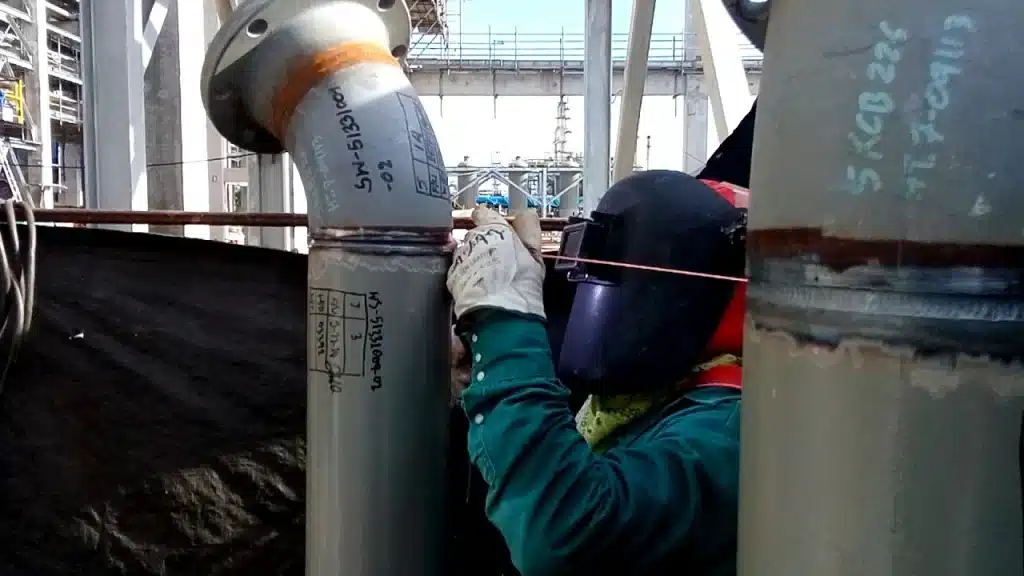
They must have a deep understanding of TIG welding principles and be able to work with a variety of materials, including stainless steel, carbon steel, and nickel alloys. Refinery welders must be able to fabricate components from raw materials, using tools such as saws, drills, and grinders. They must be able to cut, shape, and weld materials to the required specifications. Additionally, they must be able to read and interpret blueprints and specifications for the equipment they are working on.
TIG Welders In Offshore Rigs
TIG offshore welders are responsible for welding and maintaining the structures and equipment used in offshore oil and gas production. Rig welders help to ensure that offshore platforms and structures are safe, reliable, and able to withstand the harsh operating conditions found at sea.
TIG offshore welders play a critical role in the oil and gas industry by ensuring that offshore platforms and structures are safe, reliable, and able to withstand the harsh operating conditions at sea. They must have a deep understanding of TIG welding principles and be able to work with a variety of materials in challenging conditions.
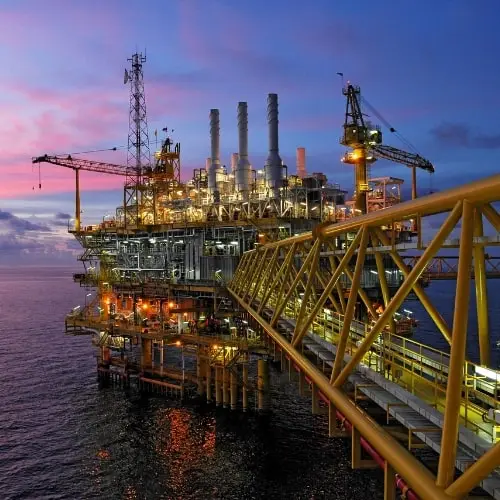
Their jobs include fabricating and installing structures, repairing equipment, inspections, and working in marine environments.
TIG Welding Inspection In Oil And Gas Industry
TIG welding inspection is an important part of ensuring the safety and quality of welding in the oil and gas industry.
Inspections are carried out to ensure that the welded components and structures meet industry standards and regulations and that they are able to withstand the harsh operating conditions found in the industry.
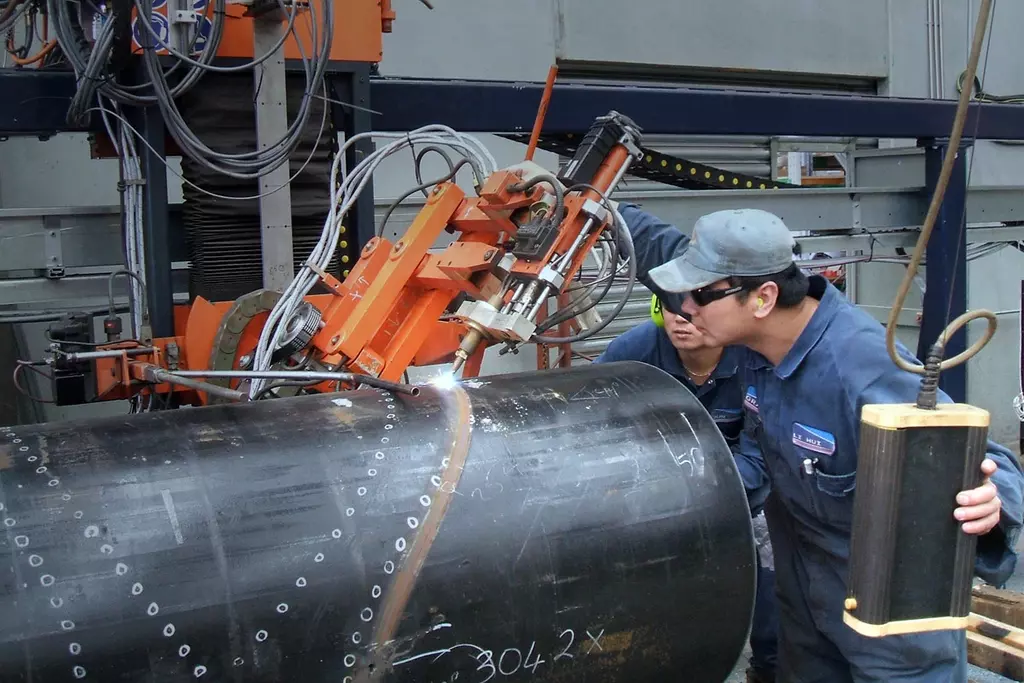
By using a combination of inspection techniques, including visual inspection, liquid penetrant testing, radiographic testing, ultrasonic testing, and magnetic particle testing, welds can be thoroughly evaluated to ensure that they meet industry standards and regulations and that they are able to withstand the harsh operating conditions found in the industry.
TIG Welding Engineer In Oil and Gas Industry
TIG welding engineers in the oil and gas industry are responsible for designing and overseeing the welding processes used in the production and maintenance of oil and gas equipment and structures. Their role involves a combination of engineering, project management, and welding expertise.
TIG welder engineer in the oil and gas industry plays a critical role in ensuring that welding operations are carried out safely and effectively and that the resulting welds meet industry standards and regulations. They must have a deep understanding of TIG welding principles, as well as project management and engineering skills, to be successful in this role.
Pressure Welder
A pressure TIG welder in the oil and gas industry is a highly skilled welder who specializes in welding pipes and components that will be subjected to high pressure or high temperature. Their role involves welding components that are used in the transportation and processing of oil and gas, such as pipelines, pressure vessels, and heat exchangers.
A pressure TIG welder in the oil and gas industry plays a critical role in ensuring that the components used in the transportation and processing of oil and gas are able to withstand high pressure and high temperature. They must be highly skilled in TIG welding techniques and have a deep understanding of welding principles to be successful in this role.
Risks Of TIG Welding Career In the Oil And Gas Industry
Like any career in the oil and gas industry, TIG welding can involve certain risks. Some of the potential risks of TIG welding in the oil and gas industry include:
- Exposure to hazardous materials: TIG welders may be exposed to hazardous materials, such as welding fumes, gases, and chemicals. Prolonged exposure to these materials can lead to respiratory problems and other health issues.
- Risk of burns and injuries: TIG welding involves the use of high heat and electricity, which can pose a risk of burns and other injuries. Welders must take appropriate safety measures, such as wearing protective clothing and using welding screens, to minimize the risk of injury.
- Working at heights or in confined spaces: TIG welders may be required to work at heights or in confined spaces, such as on offshore platforms or in pipelines. This can pose additional risks, such as falls, suffocation, or entrapment.
- Exposure to extreme weather conditions: TIG welders may be required to work in extreme weather conditions, such as high winds, rain, or extreme heat. This can pose a risk of heatstroke, hypothermia, or other weather-related illnesses.
Is it Worth The Risk?
While TIG welding can be a challenging and rewarding career, it does involve certain risks, such as exposure to hazardous materials, risk of burns and injuries, and working in challenging conditions.
It is important for individuals considering a career in TIG welding in the oil and gas industry to carefully evaluate their skills, interests, and tolerance for risk. It is also important to research potential employers and to ensure that they have a strong commitment to safety and provide appropriate training and equipment to minimize risks.
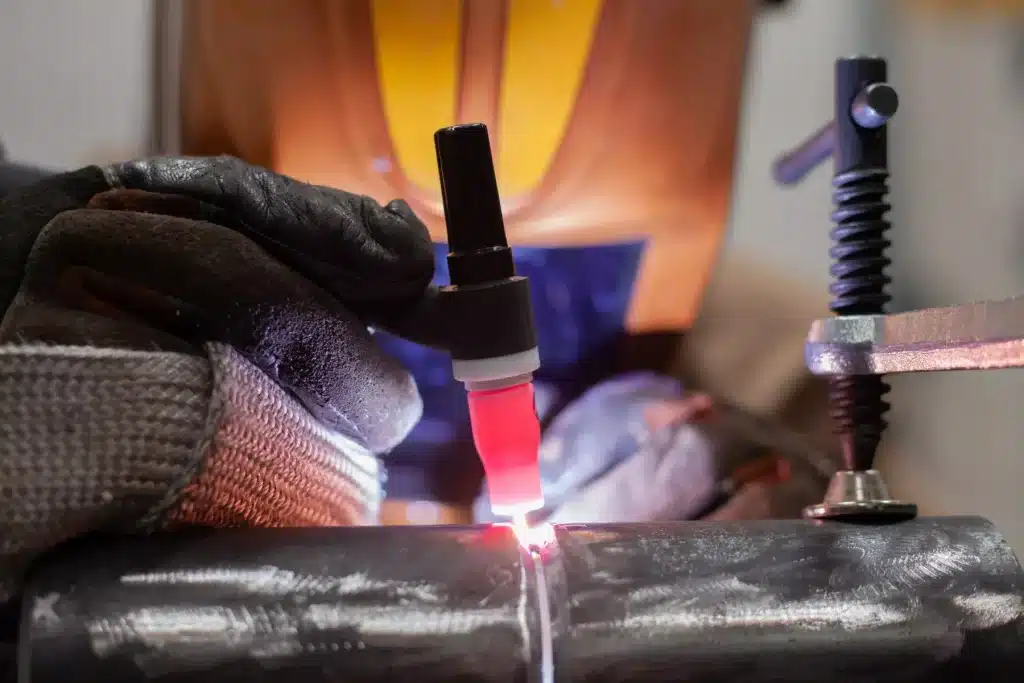
Ultimately, the decision to pursue a career in TIG welding in the oil and gas industry is a personal one that should be based on careful consideration of the risks and rewards. With proper training, safety protocols, and a commitment to following best practices, TIG welding in the oil and gas industry can be a rewarding and fulfilling career for those who are passionate about welding and the energy industry.
How Much Do TIG Welders Make In The Oil And Gas Industry?
According to the U.S. Bureau of Labor Statistics, the oil and gas industry is one of the highest-paying for TIG welders. TIG welders can earn an annual mean wage of $88,940 or $42.76 hourly wage. roles such as RIG Welder, Per Diem RIG Welder, and Per Diem Welder. RIG welders can earn an annual salary of close to $83,360. Similarly, Per Diem RIG welders can earn close to $76,624 a year. That’s represented by an hourly wage of $36.84, or $1,473 weekly and $6,385 monthly.
However, keep in mind that these are average numbers based on statistics, while things can differ in practice. The salary can vary by state, experience, company, work hours, and many more. Therefore, we see entry-level welders in the oil and gas industry make approximately $40,000 a year, while experienced welders with 7+ years of experience, can easily earn more than $100,000, or close to $150,000.
Conclusion
TIG welding is a complicated joining process that plays an essential role in the oil and gas industry, from pipelines to refineries and offshore platforms. TIG welders in the industry have a range of responsibilities, from welding and fabrication to inspection and engineering.
While the career offers many rewards, including job security, competitive salaries, and the opportunity to work on important projects, it does involve certain risks that welders must be aware of and take appropriate measures to minimize. It can be perfected as manual welding or is rarely a part of welding automation.
Despite the challenges, TIG welding remains a vital and growing field in the oil and gas industry, often combined with Metal inert gas (MIG) welding, Stick welding, or Orbital welding. Welders who are committed to safety, continuous learning, and high-quality work can build successful and fulfilling careers in the industry.
Resources:
- https://stainless-steel-world.net/altering-perceptions-tig-welding-in-the-oil-gas-industry/
- https://tiptig.com/offshore-oil-gas-industry/
- https://www.energyjobshop.com/articles/welding-positions-oil-gas-industry/
- https://www.oiljobfinder.com/members/entry-level-jobs/welding/responsibilities/
- https://blog.red-d-arc.com/welding/welding-in-the-oil-and-gas-industry/




